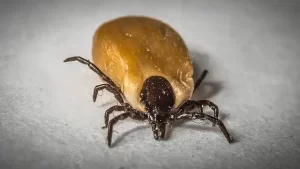COVID-19 can’t escape by the new method of virus detection: DNA sensor
- Engineered Soybeans with Pig Protein: A Promising Alternative or Pandora’s Dish?
- Severe Fever with Thrombocytopenia Syndrome (SFTS): A Tick-Borne Threat with High Mortality
- Why Isolating Bananas Extends Their Shelf Life?
- This common vitamin benefits the brain and prevents cognitive decline
- New report reveals Nestlé adding sugar to infant formula sold in poor countries
- Did Cloud Seeding Unleash a Deluge in Dubai?
COVID-19 can’t escape by the new method of virus detection: DNA sensor
- Red Yeast Rice Scare Grips Japan: Over 114 Hospitalized and 5 Deaths
- Long COVID Brain Fog: Blood-Brain Barrier Damage and Persistent Inflammation
- FDA has mandated a top-level black box warning for all marketed CAR-T therapies
- Can people with high blood pressure eat peanuts?
- What is the difference between dopamine and dobutamine?
- How long can the patient live after heart stent surgery?
COVID-19 can’t escape by the new method of virus detection: DNA sensor.
The DNA sensor is stable and fast, and the infectious virus can be known as soon as it is tested. There is no escape from the COVID-19 virus! This is an unprecedented new method of virus detection!
Virus infection is an important public health problem, because the outbreak of the virus, such as the COVID-19 pneumonia in the past two years, has caused huge economic and social impacts all over the world. The key to solving this problem is to perform virus diagnosis on biological and environmental samples in a timely and accurate manner, so as to treat the virus infection in time and prevent the spread of the virus. Therefore, it is very important to develop a method that can quickly detect whether the virus is infectious.
A new sensor can not only detect the presence of a virus, but also detect whether the virus is contagious-this is an important feature of controlling the spread of the virus.
Researchers and collaborators from University of Illinois Urbana-Champaign (UIUC) have developed this sensor, which integrates specially designed DNA fragments and nanopore sensing without the need for Samples can be pretreated to target and detect infectious viruses within minutes. They confirmed the capabilities of the sensors with two key viruses (human adenovirus and new coronavirus) that cause global infections.
Yi Lu, Professor Emeritus of the Department of Chemistry, Benito Marinas, Professor of Civil and Environmental Engineering, Lijun Rong, Professor of the University of Illinois Chicago (UIC), and Omar Azzaroni, Professor of the National University of La Plata, Argentina Co-led this work with María Eugenia Toimil-Molares, the German GSI Helmholtz Heavy Ion Research Center. Their research results were published in “Science Advances” yesterday (September 22) with the article titled “Direct detection of human adenovirus or SARS-CoV-2 with ability to inform infectivity using DNA aptamer-nanopore sensors”.

“The infectious status is very important information, it can tell us whether the patient is infectious or whether the environmental disinfection method is effective,” said Ana Peinetti, the first author of the study, who did this work while working as a postdoctoral researcher in Illinois. . She now leads a research team at the University of Buenos Aires (UBA) in Argentina. “Our sensor combines two key components: highly specific DNA molecules and highly sensitive nanopore technology. These highly specific DNA molecules that we have developed, called oligonucleotide aptamers, can not only Identify the virus, and can distinguish the infection status of the virus.”
As the “gold standard” for virus testing, PCR testing can detect viral genetic material, but it cannot determine whether a sample is infectious or whether a person is infectious. This will make it more difficult to track and control virus outbreaks, the researchers said.
“For the virus that causes COVID-19 pneumonia, research has shown that the number of RNA viruses is extremely small. In the early stages of a person’s infection, RNA viruses are low in content and difficult to detect, but this person is highly infectious,” Lu Say. “When a person recovers and is not infectious, the RNA virus content may be very high. Antigen testing follows a similar pattern. Therefore, neither RNA virus nor antigen testing can determine whether the virus is infectious. This may cause delays in treatment or isolation. Or the quarantine period for those who may still be infectious ends prematurely.”
The test to detect infectious viruses is called plaque test. Although there is such a test, it requires special preparation and a few days of incubation period to get the result. Researchers report that this new sensor can produce results within 30 minutes to 2 hours.
Marinas said that the sensor can distinguish between infectious and non-infectious viruses and detect small amounts of viruses from unprocessed samples that may contain other contaminants. This is not only for rapid diagnosis of infections that are still in the early stages of infection or after treatment. The patient is important, and it is equally important for environmental monitoring.
Marinas said: “We chose human adenovirus to demonstrate our sensor because it is an emerging water-borne viral pathogen that is of concern to the world. The water disinfectant makes the virus non-infectious and there are other potential interfering substances in the wastewater. Coupled with the pollution of natural water bodies, the ability to detect infectious adenoviruses provides an unprecedented new method. We believe that this technology has the potential to provide stronger protection for the environment and public health.”
Researchers say that this sensing technology can be applied to other viruses, by adjusting DNA to target different pathogens. The DNA aptamer used in the sensor can be easily produced by a widely used DNA synthesizer, similar to RNA probes produced for PCR testing. Nanopore sensors are also commercially available, which makes the sensing technology easy to expand, said Lu, a professor at the University of Texas, Austin.
Researchers are working to further improve the sensitivity and selectivity of sensors, and combine their DNA aptamers with other detection methods (such as color-changing test strips or the use of sensors with smartphones) to eliminate the need for special equipment. The researchers said that with the ability to distinguish between non-infectious viruses and infectious viruses, they hope that their technology will also help understand the mechanism of infection.
“In addition, the aptamer technology can be further developed into a multi-channel platform to detect other emerging water-borne viral pathogens that cause public and environmental health problems, such as norovirus and enterovirus, or viruses that cause COVID-19 pneumonia. Variations.” Marinas said.
Reference:
https://www.science.org/doi/10.1126/sciadv.abh2848
COVID-19 can’t escape by the new method of virus detection: DNA sensor
(source:internet, reference only)
Disclaimer of medicaltrend.org
Important Note: The information provided is for informational purposes only and should not be considered as medical advice.



